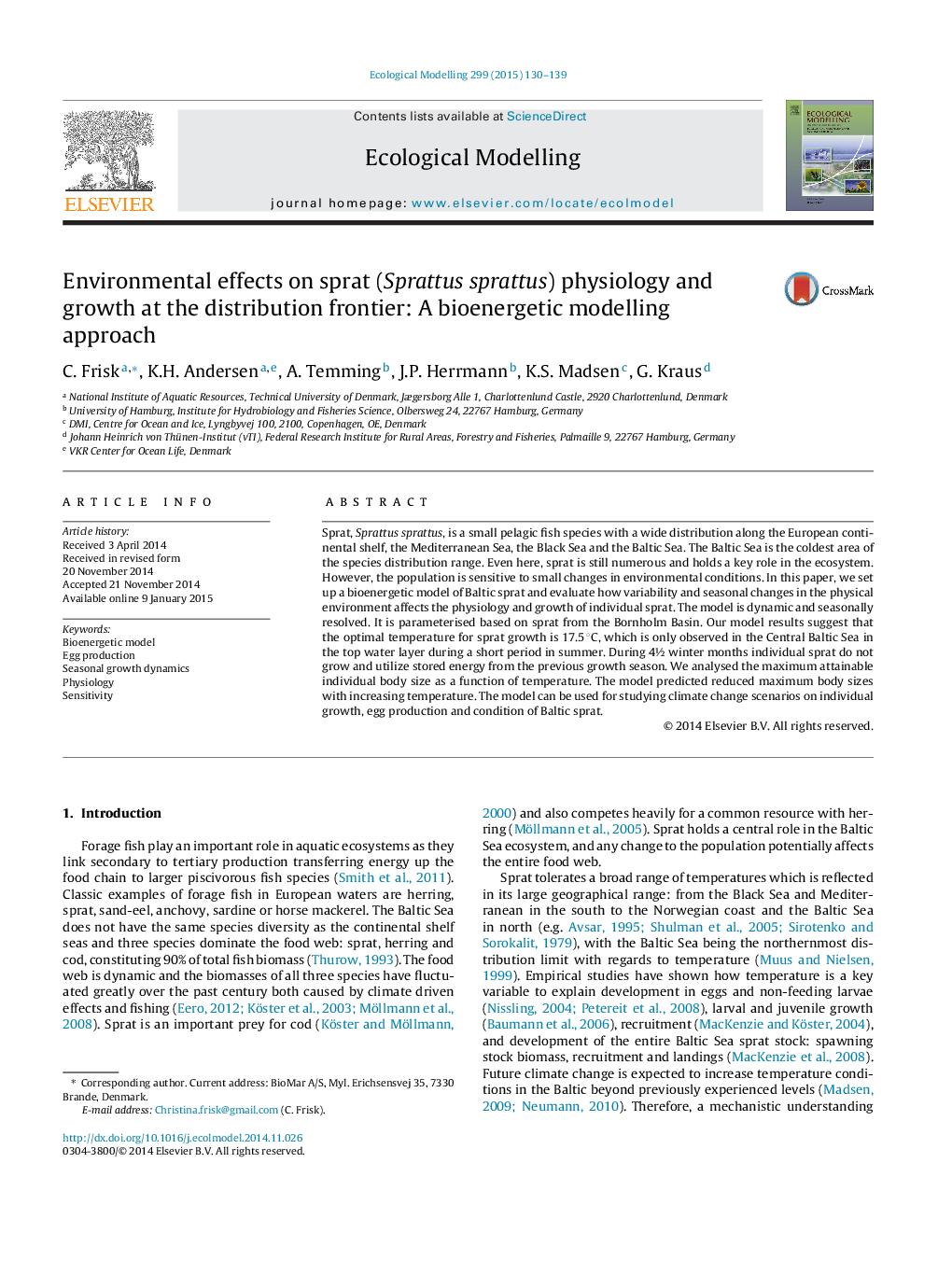| Article ID | Journal | Published Year | Pages | File Type |
|---|---|---|---|---|
| 6296727 | Ecological Modelling | 2015 | 10 Pages |
Abstract
Sprat, Sprattus sprattus, is a small pelagic fish species with a wide distribution along the European continental shelf, the Mediterranean Sea, the Black Sea and the Baltic Sea. The Baltic Sea is the coldest area of the species distribution range. Even here, sprat is still numerous and holds a key role in the ecosystem. However, the population is sensitive to small changes in environmental conditions. In this paper, we set up a bioenergetic model of Baltic sprat and evaluate how variability and seasonal changes in the physical environment affects the physiology and growth of individual sprat. The model is dynamic and seasonally resolved. It is parameterised based on sprat from the Bornholm Basin. Our model results suggest that the optimal temperature for sprat growth is 17.5 °C, which is only observed in the Central Baltic Sea in the top water layer during a short period in summer. During 4½ winter months individual sprat do not grow and utilize stored energy from the previous growth season. We analysed the maximum attainable individual body size as a function of temperature. The model predicted reduced maximum body sizes with increasing temperature. The model can be used for studying climate change scenarios on individual growth, egg production and condition of Baltic sprat.
Related Topics
Life Sciences
Agricultural and Biological Sciences
Ecology, Evolution, Behavior and Systematics
Authors
C. Frisk, K.H. Andersen, A. Temming, J.P. Herrmann, K.S. Madsen, G. Kraus,
